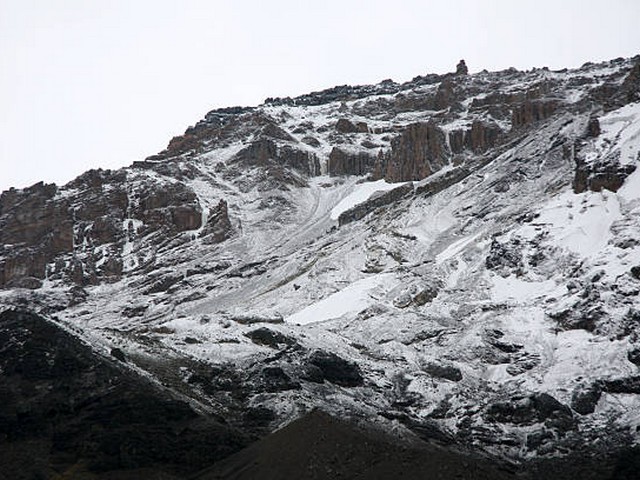How To Stay Warm On Kilimanjaro: Essential Tips for a Cozy Ascent
As the crown of Tanzania, Mount Kilimanjaro calls adventurers from around the globe to its majestic summit. The journey to Uhuru Peak isn’t just a test of physical endurance; it’s also a challenge to remain comfortably warm in the drastically changing climates of the mountain. At Kilimanjaro Centre for Trekking and Ecotourism (KCTE), we understand the essence of warmth and comfort during this epic adventure. In this detailed guide, we will walk you through expert tips and strategies on how to stay warm on Kilimanjaro, ensuring that your trek is as enjoyable as it is memorable.
Understanding Kilimanjaro’s Climate
A Mountain of Many Weathers
Kilimanjaro is not just a mountain; it’s a mosaic of ecological systems. From the balmy rainforests at its base to the icy breath of its summit, temperatures can range drastically. As you ascend, temperatures can drop below freezing, especially at night. Understanding this variability is the first step in preparing adequately for your climb.
Essential Gear to Stay Warm
Layer Like a Pro
The key to staying warm starts with proper clothing. Opt for a layered approach:
- Base Layer: This layer is crucial as it sits right against your skin. Choose materials that wick moisture away to keep you dry and warm. Materials like merino wool or synthetic fibers work best.
- Insulating Layer: Fleece or down jackets provide the necessary insulation. Remember, the air trapped between layers retains heat.
- Outer Layer: Your shield against the wind and rain should be a waterproof and windproof jacket. Ensure it’s breathable to allow moisture from your body to escape.
Protect Your Extremities
- Headwear: A good hat that covers your ears is non-negotiable. Consider a balaclava for face protection when the wind picks up.
- Gloves: Waterproof gloves with a snug fit and insulated lining will protect your hands from the cold and damp.
- Socks and Boots: Waterproof, insulated boots are a must, paired with wool or thermal socks. Consider liner socks to prevent blisters.
Sleeping Gear for Sub-Zero Nights
- Sleeping Bag: Invest in a four-season sleeping bag rated for temperatures below what you might expect.
- Insulated Mat: An insulated sleeping pad can be a game-changer by providing an extra barrier against the cold ground.
Nutritional Tips to Boost Your Body Heat
Fueling the Furnace
Your body needs calories to generate heat:
- Complex Carbohydrates: Foods like whole grains and legumes provide long-lasting energy.
- Fats: Don’t shy away from good fats; they’re an excellent source of energy and help to keep you warm.
- Proteins: Essential for muscle repair and also great for generating body heat.
Hydration is Key
Staying hydrated helps your body regulate temperature efficiently. Drink warm fluids to keep the chill at bay, and consider hydration salts to replenish lost electrolytes.
Behavioral Strategies to Retain Warmth
Keep Moving
Staying active helps maintain body heat. However, balance is crucial; don’t sweat excessively as this can lead to increased heat loss.
Huddle for Heat
The buddy system works great for warmth. Sharing a tent with a fellow climber can minimize the space to be heated and use body warmth effectively.
Warm Up Before Sleeping
Perform light exercises to warm up your body before getting into your sleeping gear. This can make a significant difference in how comfortably you sleep.
Why Choose KCTE for Your Kilimanjaro Adventure?
At Kilimanjaro Centre for Trekking and Ecotourism (KCTE), we’re not just about reaching the summit; we’re about doing it right. Our expert guides are trained in high-altitude trekking and are equipped with the best tips and tricks to keep you warm and safe. By choosing KCTE, you ensure a journey that’s as warm as it is exhilarating.
FAQs: Staying Warm on Kilimanjaro
What is the best time of year to climb Kilimanjaro for warmer conditions?
The warmest months to climb Kilimanjaro are typically from December to March and from June to October. These periods provide the most stable weather conditions.
Can I rent warm gear instead of buying it?
Absolutely! KCTE offers high-quality rental gear that is specifically designed for the temperatures on Kilimanjaro.
How important is acclimatization in staying warm?
Very! Proper acclimatization helps your body adjust to the cold better. KCTE’s climbing schedules are designed to enhance acclimatization, thus keeping you warmer.
What should I do if I feel excessively cold?
Inform your guide immediately. It’s crucial to address extreme cold before it leads to hypothermia.
Concluding Thoughts
Climbing Kilimanjaro is a dream for many, and it should not be marred by unpreparedness for the cold. Equip yourself with the right gear, nutrition, and knowledge to ensure that your journey to the Roof of Africa is spectacularly warm and enjoyable. And remember, Kilimanjaro Centre for Trekking and Ecotourism (KCTE) is here to guide you through every step of the way. Ready to embark on a warm journey up the mighty Kilimanjaro? Contact us today and make your dream climb a cozy reality!




